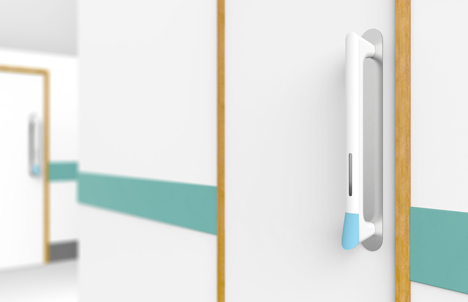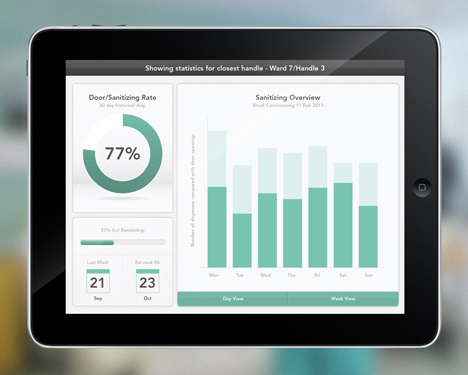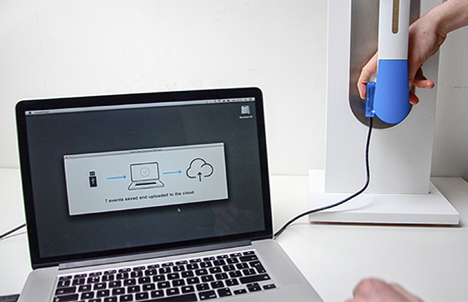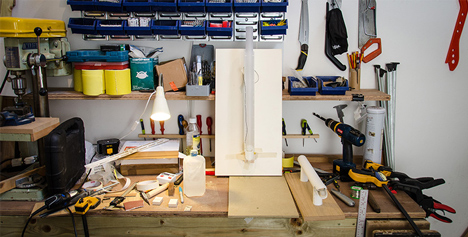Hospital door handle sanitises users' hands and measures cleanliness of staff
A new type of hospital door handle by British studio Agency of Design transforms a hotbed for germs into a sanitising device, with a sensor that monitors how often it is used.
The PullClean was designed to encourage staff working in hospitals to sanitise their hands while walking between appointments.
"Hospital acquired infections kill 100,000 people in the US each year," said Jake McKnight, CEO of Altitude Medical - the makers of the PullClean handle.

"Workers don't actually choose not to sanitise. It's rather they have busy working lives and forget exactly when and how often they sanitise."
To combat this, Agency of Design worked on a way of incorporating a hand sanitiser into how staff use doors.

At the bottom of the handle is a blue button that releases a small amount of sanitiser that doesn't require water to wash off. Above is a clear line indicating how much of the gel is left.
"By transforming the door handle into a sanitiser we ensure the sanitisers are in the line of motion of hospital staff," said Rich Gilbert from the Agency of Design team.

To measure its effectiveness, there is also a sensor built in to the handle. It can detect when the door is used and when the sanitiser is pressed, giving a percentage score of how often staff clean their hands.
The information can then be accessed via a web portal and provide feedback on the hand sanitising practices in different areas of the hospital.

"You can't force people to sanitise their hands," said McKnight. "Every effort has been made to remind people to sanitise, usually at massive cost and to no avail."
"This costs hospitals in the US $45 billion (£27 billion) a year," he continued. "We've created a simple pull door handle that helps remind users when to sanitise."

A pre-production prototype of the CleanHandle has been used in trials at a US hospital, and trials in a UK hospital are about to begin. Agency of Design reports that since installation, rates of hand sanitising rose from 22 to 77 percent.
"The handle has been seen traditionally as a vector, as a source of infection. There have been lots of attempts to stop handles infecting hands, we’re the first people to see this threat as an opportunity," concluded Knight.
As a result, the handle is now in production and due to ship later in 2014.